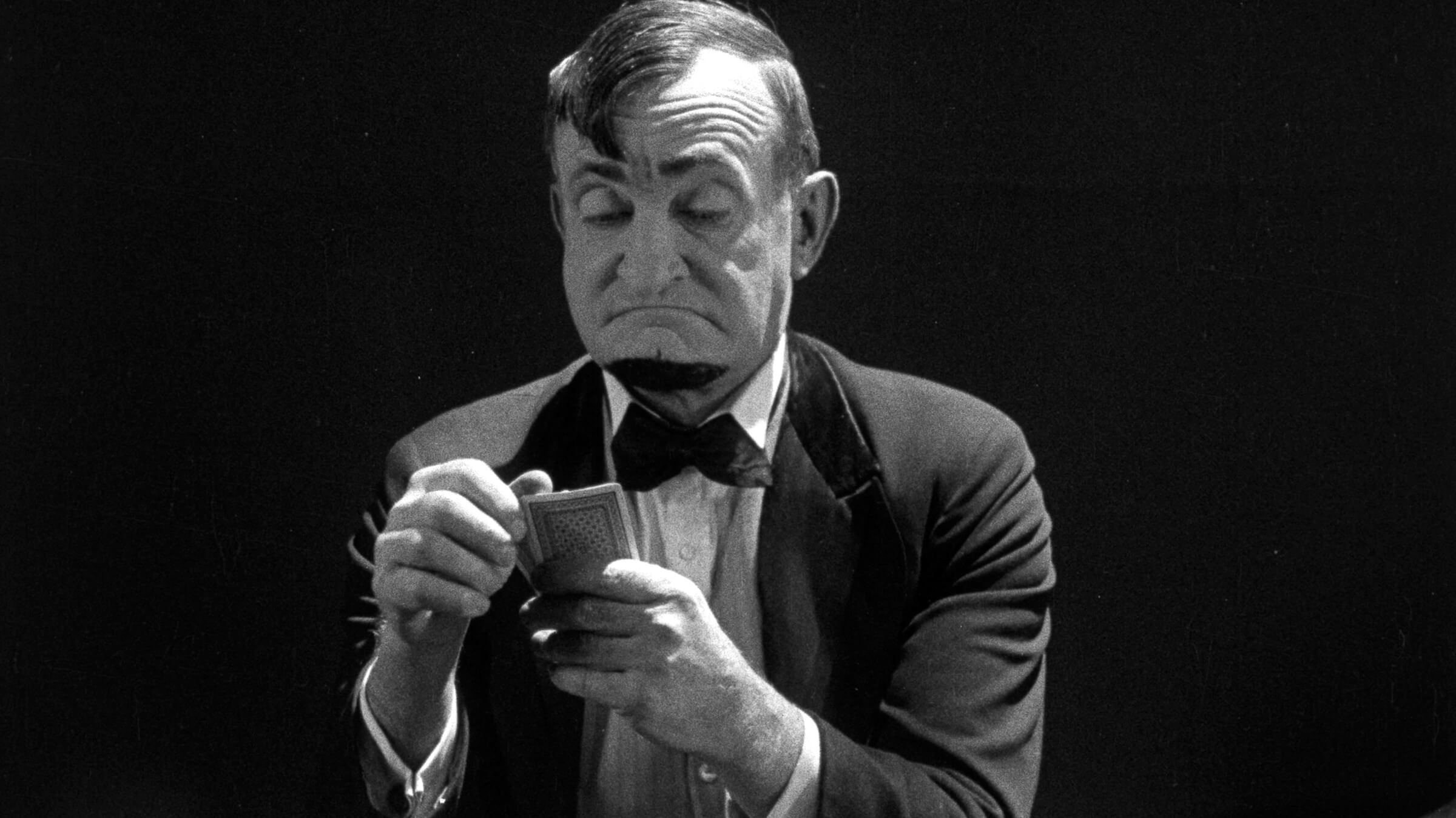This feature was published in conjunction with the screenings of Dancing Mothers (with The Pill Pounder) and The Gorilla at SFSFF 2024
Although overlooked today, Charlie Murray appeared in a touch fewer than three hundred films from 1912 to 1940, making one- and two-reel comedies at Biograph, Keystone, and elsewhere over the course of his first ten years, not to mention his later starring and major supporting roles in more than sixty features. Like many silent-era performers, Murray came from the stage, and it was during those days that he created and honed a professional “Irishman” persona that later became his claim to fame in movies. Here are some highlights of his very impressive career.
The Big Top and Other Stages
Born in Indiana in 1872, Murray began performing at age ten in traveling medicine shows. Making his way through various tent and pony shows, he did time with circuses before ending up in vaudeville. He hit the big time when he teamed up with Ollie Mack and they became the Irish equivalent of the popular “Dutch” comedy duo Weber and Fields. After working together for more than twenty years in hit shows like Shooting the Chutes and The Sunny Side, Murray and Mack went their separate ways in 1910.
Biograph Days
D.W. Griffith saw Murray on stage and recruited him to join Biograph. Under the direction of Del Henderson and Edward Dillon, Murray became one of the leading comics of the company, which also boasted Gus Pixley, Sylvia Ashton, David Morris, and Gus Alexander. At first, Murray played all types of roles—tramps, bogus counts, Jewish sweatshop owners, even appearing in drag for Getting Rid of Trouble (1912) as a strapping Irish cook who’s used by “her” diminutive employer to get rid of pesky door-to-door salesmen. Eventually he focused on a single character, an always lazy, yet conniving Irishman named Skelley in shorts like Skelley’s Birthday and Skelley and the Turkey (both 1914). The best of the bunch may be Skelley’s Skeleton, also from 1914, where he sells his skeleton in advance to the local sawbones. This works out fine, except the doctor watches him like a hawk and won’t let him do anything that might compromise his future property.
The Call of the West
On a trip to California for Biograph, Charlie liked it and decided he wanted to stay, so he migrated to Keystone, bringing Skelley with him. The character was renamed Hogan and continued to get into trouble in shorts like Hogan Out West and Hogan’s Wild Oat (both 1915). As Murray became better known the Hogan name was dropped, but whether it was as Riley, McFadden, or Cassidy, he essentially played this wily Irishman for the rest of his career. With support from Louise Fazenda, Slim Summerville, and Polly Moran, Charlie starred in shorts like The Feathered Nest (1916), A Bedroom Blunder (1917), and Hard Knocks and Love Taps (1921). He also starred in the Mack Sennett-produced features Love, Honor and Behave (1920) and A Small Town Idol (1921), maintaining his status as one of Sennett’s top stars until 1922. Behind the scenes, Murray was a paternal figure on the Sennett lot. In interviews from the 1910s, he talked with pride about helping to teach the new, younger players how to perform for the camera and, when Keystone character actor Gene Rogers died penniless in 1919, Murray spearheaded a collection to give him a proper burial.
Irishman for Hire
In 1922 Murray accepted an offer from Long Island-based producer C.C. Burr and moved back to New York for a series of thirteen All-Star Comedy two-reelers built around his well-known and, by this time, well-seasoned, screen persona. Directed by Gregory La Cava, later of My Man Godfrey (1936) fame, Murray was supported by Raymond McKee, Mary Anderson, and a very young Clara Bow. In the recently found and restored The Pill Pounder (1923), Charlie dominates with his usual performance savvy, while Clara seems to be watching and absorbing his screen know-how. With the completion of the All-Star series he immediately returned to Hollywood for more Sennett shorts and a busy schedule of supporting roles in big-budget features that included turns with Colleen Moore in both Painted People (1924) and Irene (1926); with Charles Ray in Percy (1925); Sally O’Neil and William Haines in Mike (1926); plus, he played the titular Wizard in The Wizard of Oz (1925).
The Main Attraction
What changed Charlie from a busy supporting actor to a feature film star was 1926’s The Cohens and Kellys. A thinly veiled rip-off of Anne Nichols’s hit play Abie’s Irish Rose, Murray was teamed with the short and stout George Sidney as battling heads of Irish and Jewish families whose oldest son and daughter fall in love. Fueled by Murray and Sidney’s combative chemistry, the film was a hit and the team continued their feuding in four additional features at First National Pictures, from 1926’s Sweet Daddies through 1928’s Flying Romeos. At the same time Charlie starred on his own in pictures like McFadden’s Flats (1927), The Gorilla (1927), Vamping Venus (1928), and The Head Man (1928). With the arrival of sound Charlie returned to work with George Sidney in shorts and six additional Cohens and Kellys features. His last appearance was in the Eddie Cline-directed Breaking the Ice (1938).
Charlie Murray starred in The Pill Pounder and The Gorilla, both recently restored and returned to the big screen after nearly a hundred-year absence.

